Join us as we dip into the intriguing lives of 15+ animals that start with U. We will discover their special traits and the diversity they bring to the remarkable tapestry of our natural world.
You can see related info about animals articles that start with the letter ‘T’
From the lush rainforests of South America, where the vibrant Umbrella Bird flaunts its amazing crest, to the lively coral reefs filled with Unicornfish sporting horn-like protrusions on their heads, the letter U takes us on a worldwide adventure.
This animal exploration isn’t just about pretty pictures. We’ll dive deeper into the smart ways these creatures survive and thrive.
Discover the secret communication of the mysterious Unau sloth, or find out how the Uromastyx lizard, a spiky-tailed herbivore, manages to survive in the tough desert.
So, get ready for a surprise! As we delve into the lives of animals starting with U, you’ll develop a new admiration for the amazing diversity and cleverness that nature has to offer.
List Of Animals That Start with U
- Uakari (a type of monkey)
- Uguisu (Japanese bush warbler)
- Umbrellabird
- Unicornfish
- Urial (wild sheep)
- Urutu (venomous snake)
- Utahraptor (dinosaur)
- Uguisu (Japanese bush warbler)
- Ulysses Butterfly
- Umbrellabird
- Underwing Moth
- Upupa (hoopoe bird)
- Urial (wild sheep)
- Urutu (venomous snake)
- Umbrellabird
- Unicornfish
- Utahraptor (dinosaur)
- Uguisu (Japanese bush warbler)
- Ulysses Butterfly
Uakari

| Scientific Name | Various species (e.g., Cacajao genus) |
| Special Habit | Arboreal primate with a distinctive red face |
| Place of Origin | Amazon rainforest, South America |
| Size | Medium-sized, around 45 to 50 cm |
| Commonly Found In | Treetops of tropical rainforests |
| Lifespan | Approximately 20 years |
| Diet | Fruits, seeds, insects |
| Reproduction | Viviparous, typically giving birth to a single offspring |
| Conservation Status | Varies by species (Some are endangered) |
The bright red face of the uakari is believed to indicate good health and plays a role in social interactions within the group.
Uaru Cichlid
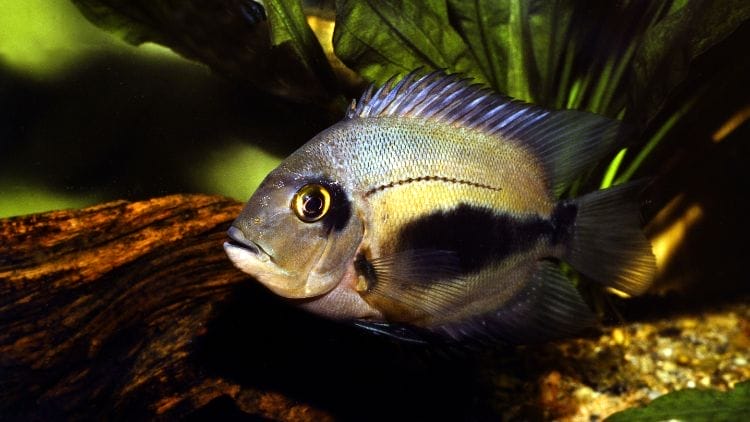
| Scientific Name | Uaru amphiacanthoides |
| Special Habit | Colorful freshwater fish with a disc-shaped body |
| Place of Origin | Amazon River basin, South America |
| Size | Up to 25 cm in length |
| Commonly Found In | Slow-moving waters of Amazon tributaries |
| Lifespan | 10 to 15 years |
| Diet | Omnivorous, consuming plants and small invertebrates |
| Reproduction | Oviparous, laying eggs on flat surfaces |
| Conservation Status | Not Assessed |
Uaru cichlids are known for their unique facial markings, resembling expressive eyes. Their distinct appearance adds to their popularity in the aquarium trade.
Uguisu
| Scientific Name | Zoothera dauma |
| Special Habit | Small bird, known as the Japanese bush warbler |
| Place of Origin | East Asia, including Japan |
| Size | Approximately 15 cm in length |
| Commonly Found In | Bushes, woodlands, gardens |
| Lifespan | Around 3 to 5 years |
| Diet | Insects, small invertebrates |
| Reproduction | Oviparous, building cup-shaped nests |
| Conservation Status | Least Concern |
The uguisu’s melodious song, often heard in early spring, is associated with the arrival of the season and is considered a symbol of good luck in Japanese culture.
Uinta Ground Squirrel
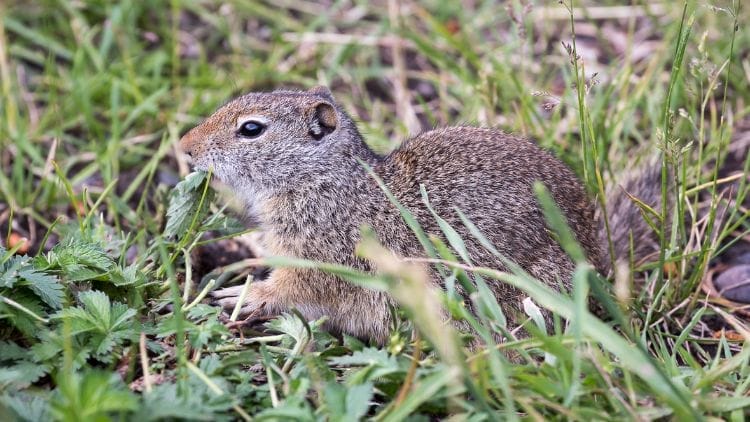
| Scientific Name | Urocitellus armatus |
| Special Habit | Hibernating rodent with burrowing behavior |
| Place of Origin | Western North America, including the Uinta Mountains |
| Size | Small to medium-sized, around 20 to 26 cm |
| Commonly Found In | Alpine meadows, grasslands |
| Lifespan | 2 to 4 years |
| Diet | Herbivorous, feeding on seeds, plants |
| Reproduction | Viviparous, giving birth to litters in spring |
| Conservation Status | Least Concern |
Uinta ground squirrels are expert burrowers and play a crucial role in ecosystem dynamics by aerating soil and providing habitat for other species.
Uintatherium
| Scientific Name | Uintatherium genus |
| Special Habit | Extinct herbivorous mammal resembling a rhinoceros |
| Place of Origin | North America, Eocene epoch |
| Size | Large, comparable to a modern rhinoceros |
| Commonly Found In | Extinct, fossilized remains |
| Lifespan | Extinct |
| Diet | Herbivorous, likely feeding on vegetation |
| Reproduction | Unknown |
| Conservation Status | Extinct |
Uintatherium, despite its rhinoceros-like appearance, is not closely related to modern rhinos. It belonged to a now-extinct group of mammals called uintatheres.
Ulysses Butterfly
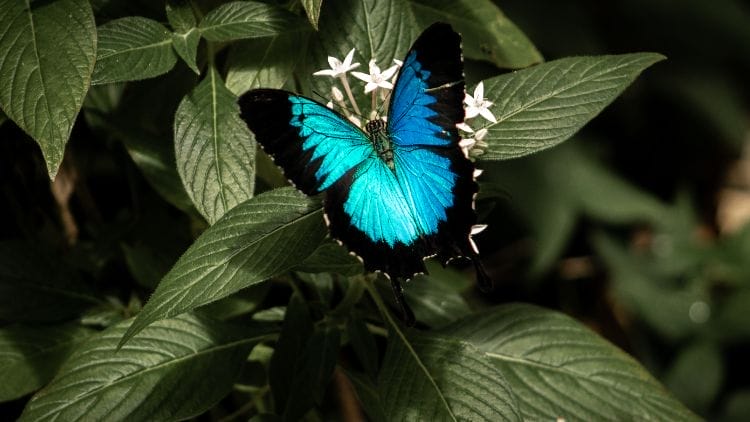
| Scientific Name | Papilio ulysses |
| Special Habit | Colorful butterfly with iridescent blue wings |
| Place of Origin | Northern Australia, Papua New Guinea |
| Size | Medium-sized, wingspan around 12 cm |
| Commonly Found In | Rainforests, coastal areas |
| Lifespan | Several weeks |
| Diet | Nectar from various flowers |
| Reproduction | Oviparous, laying eggs on host plants |
| Conservation Status | Least Concern |
The Ulysses Butterfly is famous for its dazzling blue color, which is not due to pigments but to microscopic structures that reflect and refract light, creating the vibrant hue.
Umbrellabird
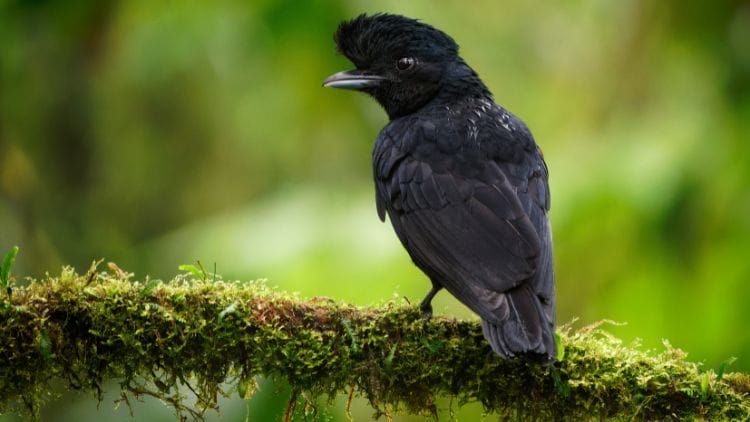
| Scientific Name | Cephalopterus species |
| Special Habit | Large, black bird with a distinct crest resembling an umbrella |
| Place of Origin | Central and South America |
| Size | Large, with males having a prominent throat sac |
| Commonly Found In | Rainforests, wooded areas |
| Lifespan | Around 15 years |
| Diet | Fruits, insects, small vertebrates |
| Reproduction | Oviparous, building nests in trees |
| Conservation Status | Varies by species (Some are Near Threatened) |
The Umbrellabird’s inflatable throat sac is used for vocalizations during courtship displays. The larger the sac, the more attractive the male is to potential mates.
Unau (Linnaeus’s Two-Toed Sloth)

| Scientific Name | Choloepus didactylus |
| Special Habit | Slow-moving, arboreal mammal with two toes |
| Place of Origin | South America, rainforests |
| Size | Medium-sized, around 50 to 70 cm |
| Commonly Found In | Trees, primarily in the canopy |
| Lifespan | Up to 30 years |
| Diet | Herbivorous, feeding on leaves |
| Reproduction | Oviparous, giving birth to a single offspring |
| Conservation Status | Least Concern |
Unaus are excellent swimmers, and they occasionally drop from trees into water to swim. Their fur provides a home to algae, giving them a greenish tint, enhancing their camouflage.
Underwing Moth
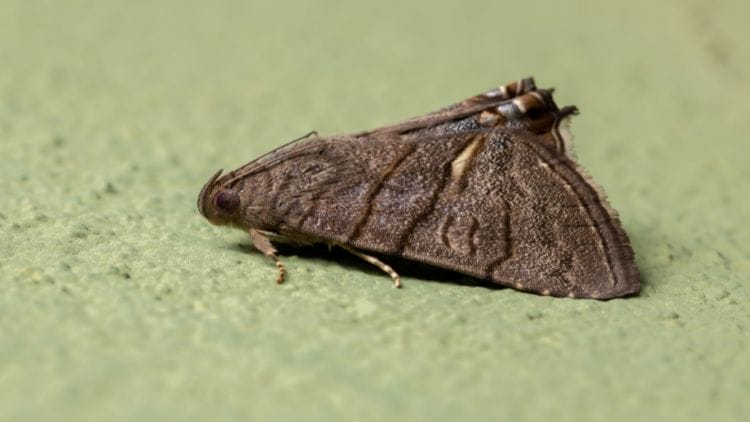
| Scientific Name | Catocala species |
| Special Habit | Nocturnal moth with cryptic wing patterns |
| Place of Origin | Worldwide, diverse habitats |
| Size | Medium-sized, wingspan varies by species |
| Commonly Found In | Forested areas, gardens |
| Lifespan | Several weeks |
| Diet | Adults: nectar; Caterpillars: leaves |
| Reproduction | Oviparous, laying eggs on host plants |
| Conservation Status | Not Assessed |
Underwing moths are named for their distinctive wing patterns. When at rest, their forewings conceal bright hindwings, which are suddenly revealed when they take flight, surprising predators.
Upland Sandpiper
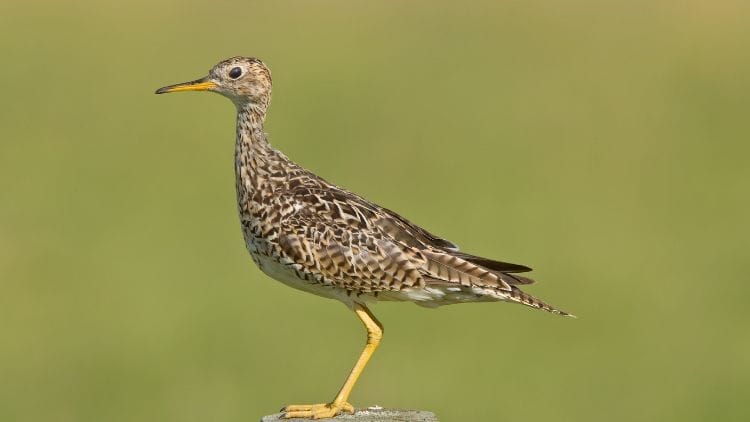
| Scientific Name | Bartramia longicauda |
| Special Habit | Ground-dwelling shorebird with a distinctive appearance |
| Place of Origin | North America, grasslands, prairies |
| Size | Medium-sized, around 30 to 38 cm |
| Commonly Found In | Grasslands, agricultural fields |
| Lifespan | Around 7 years |
| Diet | Insects, small invertebrates |
| Reproduction | Oviparous, building nests in grassy areas |
| Conservation Status | Near Threatened |
Upland Sandpipers are known for their distinctive, melodic calls during the breeding season. They have a unique appearance with a long neck and slender body.
Ural owl
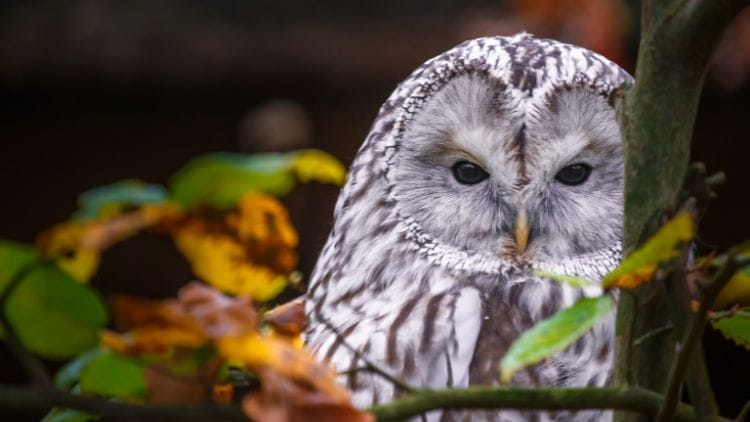
| Scientific Name | Strix uralensis |
| Special Habit | Nocturnal bird of prey with excellent hearing |
| Place of Origin | Europe, Asia, northern forests |
| Size | Medium to large, wingspan around 105 to 135 cm |
| Commonly Found In | Coniferous and mixed forests |
| Lifespan | Up to 15 years in the wild |
| Diet | Carnivorous, preying on small mammals and birds |
| Reproduction | Oviparous, laying eggs in tree cavities |
| Conservation Status | Least Concern |
The Ural Owl has asymmetrical ear openings, allowing it to locate prey by sound. This adaptation enhances its hunting efficiency, especially in low-light conditions.
Urechis unicinctus (Penis Fish)

| Scientific Name | Urechis unicinctus |
| Special Habit | Marine spoonworm with a unique appearance |
| Place of Origin | East Asia, Pacific Ocean |
| Size | Approximately 25 to 30 cm |
| Commonly Found In | Subtidal sandy or muddy areas |
| Lifespan | Around 15 years |
| Diet | Detritus and organic matter in sediment |
| Reproduction | Oviparous, releasing eggs and sperm into the water |
| Conservation Status | Not Assessed |
Despite its nickname, the “Penis Fish” is not a fish but a marine worm. Its peculiar shape aids in burrowing into the ocean floor.
Urial
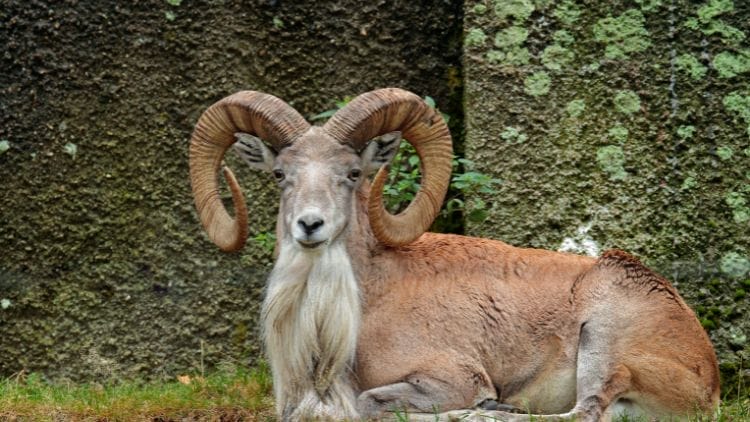
| Scientific Name | Ovis orientalis vignei |
| Special Habit | Wild sheep with distinctive twisted horns |
| Place of Origin | Central Asia, mountains and steppes |
| Size | Medium-sized, around 80 to 110 cm at the shoulder |
| Commonly Found In | Rocky mountainous terrain |
| Lifespan | Around 10 to 12 years |
| Diet | Herbivorous, grazing on grasses and shrubs |
| Reproduction | Viviparous, giving birth to lambs |
| Conservation Status | Least Concern |
Male urials have impressive spiral horns that can reach lengths of up to 80 cm. The horn size is an important factor in their social status.
Uromastyx (Spiny-Tailed Lizard)
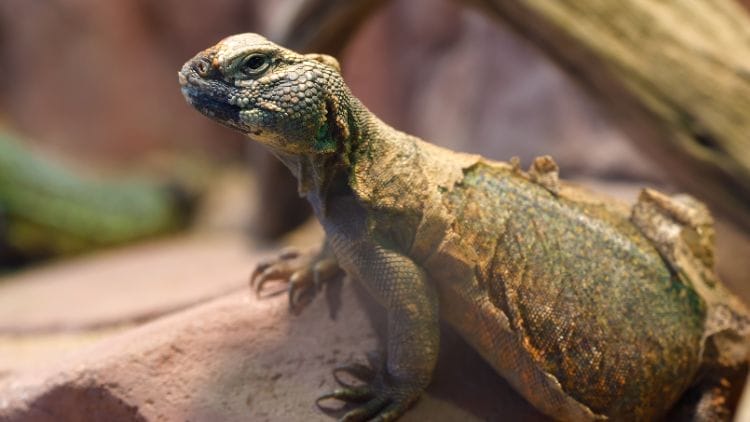
| Scientific Name | Uromastyx species |
| Special Habit | Diurnal lizard with a spiny tail and distinctive coloration |
| Place of Origin | North Africa, Middle East |
| Size | Small to medium-sized, varying by species |
| Commonly Found In | Desert and rocky habitats |
| Lifespan | Around 15 to 20 years |
| Diet | Herbivorous, consuming plants and flowers |
| Reproduction | Oviparous, laying eggs in burrows |
| Conservation Status | Varies by species (Some are Not Evaluated) |
Uromastyx lizards are known for their unique defense mechanism. When threatened, they can use their powerful tail to deliver a painful swipe to potential predators.
Urutu Snake
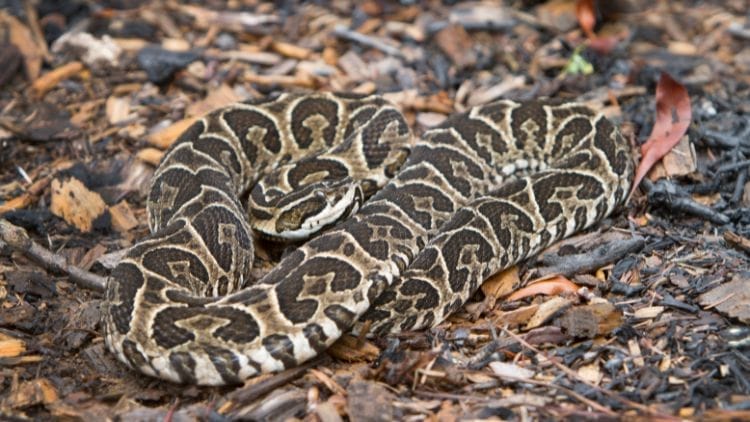
| Scientific Name | Bothrops alternatus |
| Special Habit | Venomous pit viper with a distinctive pattern |
| Place of Origin | South America, primarily Brazil |
| Size | Medium-sized, around 70 to 100 cm |
| Commonly Found In | Forested areas, grasslands |
| Lifespan | Approximately 10 to 15 years |
| Diet | Carnivorous, preying on small mammals and birds |
| Reproduction | Viviparous, giving birth to live young |
| Conservation Status | Not Assessed |
The Urutu Snake is known for its potent venom, and while it is venomous, it plays a crucial role in controlling rodent populations in its habitat.
Utonagan
| Scientific Name | Canis lupus familiaris |
| Special Habit | Domestic dog breed with a wolf-like appearance |
| Place of Origin | United Kingdom |
| Size | Medium to large, around 60 to 84 cm at the shoulder |
| Commonly Found In | Domestic settings as a companion dog |
| Lifespan | Around 12 to 15 years |
| Diet | Omnivorous, typical dog diet |
| Reproduction | Viviparous, giving birth to puppies |
| Conservation Status | Not Applicable |
The Utonagan was intentionally bred to resemble a wolf but has a gentle and friendly temperament. It is often sought as a family pet for its loyal nature.
To Wrap Up
And there you have it – a quick dive into the lives of 15+ animals that start with U! Each one, though few in number, adds its own charm to the vast canvas of nature. Keep the spark of curiosity alive, and let’s continue to appreciate and protect the homes of these incredible creatures. Thanks for joining us on this short but sweet exploration of the animal kingdom!


You May Also Read